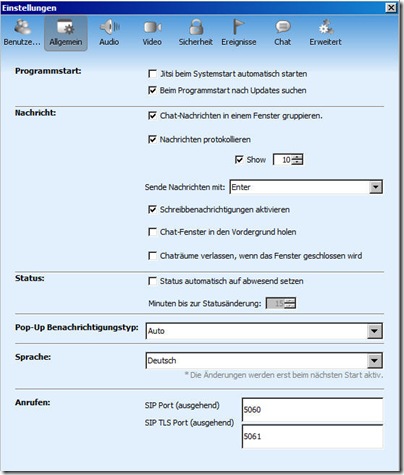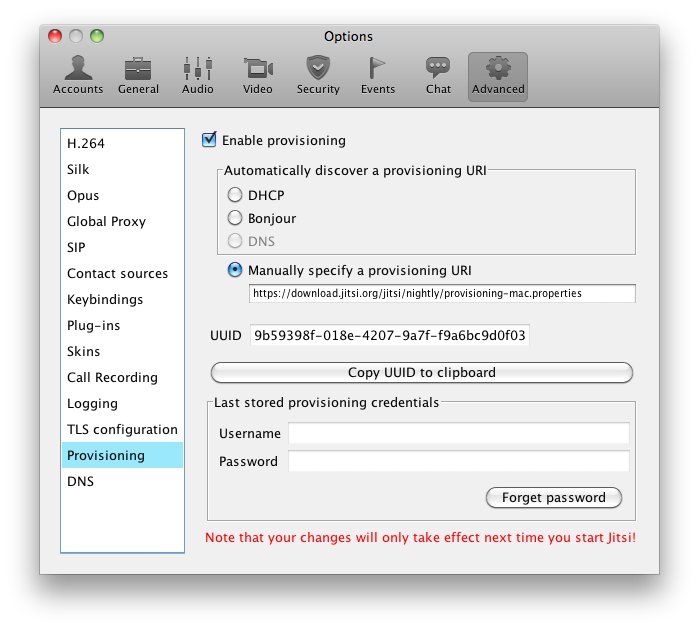

A malicious server would therefore silently be able to listen to all metadata traffic. Transporting the metadata over TLS to the server does not really solve the problem as some governments run certification authorities that are trusted by the operating systems and web browsers.

When a VoIP account is configured to use a specific server, it passes all traffic to the address obtained from the possibly rogue DNS server. Jitsi, or any other client application, relies on the replies from the DNS servers. As conventional DNS provides no security mechanisms, a rogue DNS can very easily supply the user with faked responses to requests and therefore redirecting him to an arbitrary server. Users usually receive the addresses of DNS servers from their internet provider. At first sight signaling data seems not important, but looking at the newest developments in the Far East and North African countries it implies that some unfriendly people might only be interested in the metadata.ĭNS is responsible for converting names into network addresses to locate servers. Securing the connection to the server through TLS helps, but the connection can still be compromised when a rogue certificate can be obtained (for example from a government CA). While these technologies provide a high level of security for the user data, the signaling metadata is blindly sent to the servers returned from DNS a query. Trying to not being just another SIP Client it incorporates security mechanisms like ZRTP for encrypted media streams (audio, video, desktop sharing, etc.) and OTR for instant messages. The complete list of Flutter packages provided below can help you add Real-time Communication or Live-streaming capability to your Flutter app directy via WebSocket or WebRTC or via 3rd party APIs such as Twilio, Jitsi, etc.Jitsi (formerly known as SIP Communicator), is a Java based open source VoIP and Instant Messaging client supporting various protocols such as SIP and XMPP. Whereas, WebSocket utilizes a server per session method for communicatiom, where the WebSocket communication is always routed through the server between clients, increasing the resources needed to ensure connectivity. WebRTC is a peer-to-peer communication method, where the WebRTC signaling server can facilitate a direct connection between peers and isn't required to participate in the communication loop. But, it is also important to note the differences between the two while choosing an optimal solution for your Flutter project.

#JITSI VOIP CLIENT SOFTWARE#
Both protocols can also be used together to maximize efficiency in some cases such as WebSocket can assist WebRTC in ensuring high-level real-time connectivity with fully covered software dialogue. The WebSocket protocol shares many similarities with WebRTC. WebRTC and WebSocket are two most widely used Realtime communication protocols. It is useful for voice over IP (VoIP), teleconferencing, video calling, file sharing, screen sharing, multiplayer gaming, etc. In this context, the term real-time is synonymous with live. This means that there is no delay between when someone speaks and when the other person hears what they said. Realtime communication is any mode of communication in which all users can exchange information instantly or with negligible latency or transmission delays. Top Flutter Real-time Communication packages


 0 kommentar(er)
0 kommentar(er)
